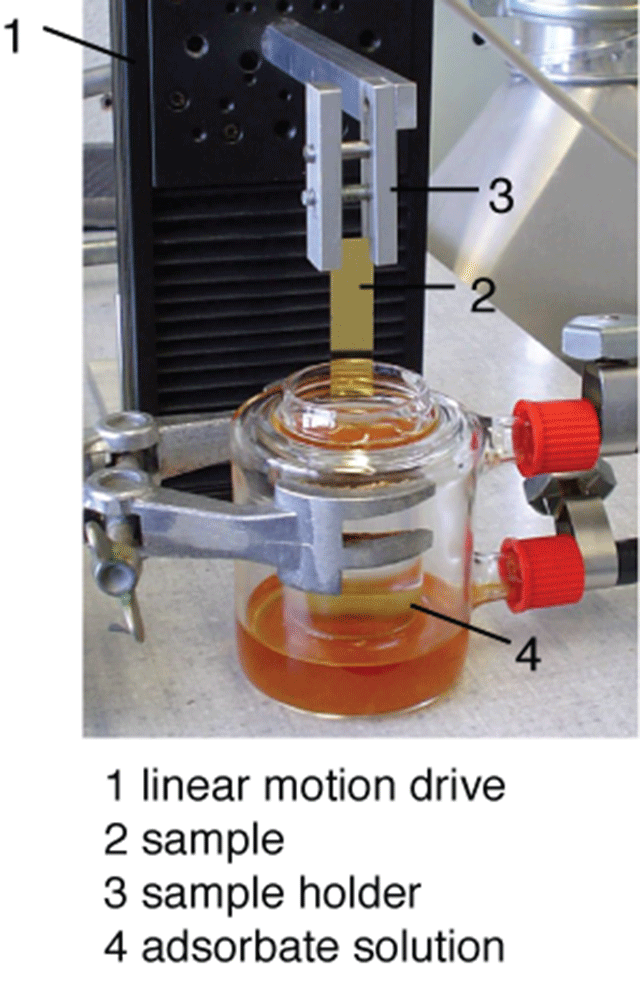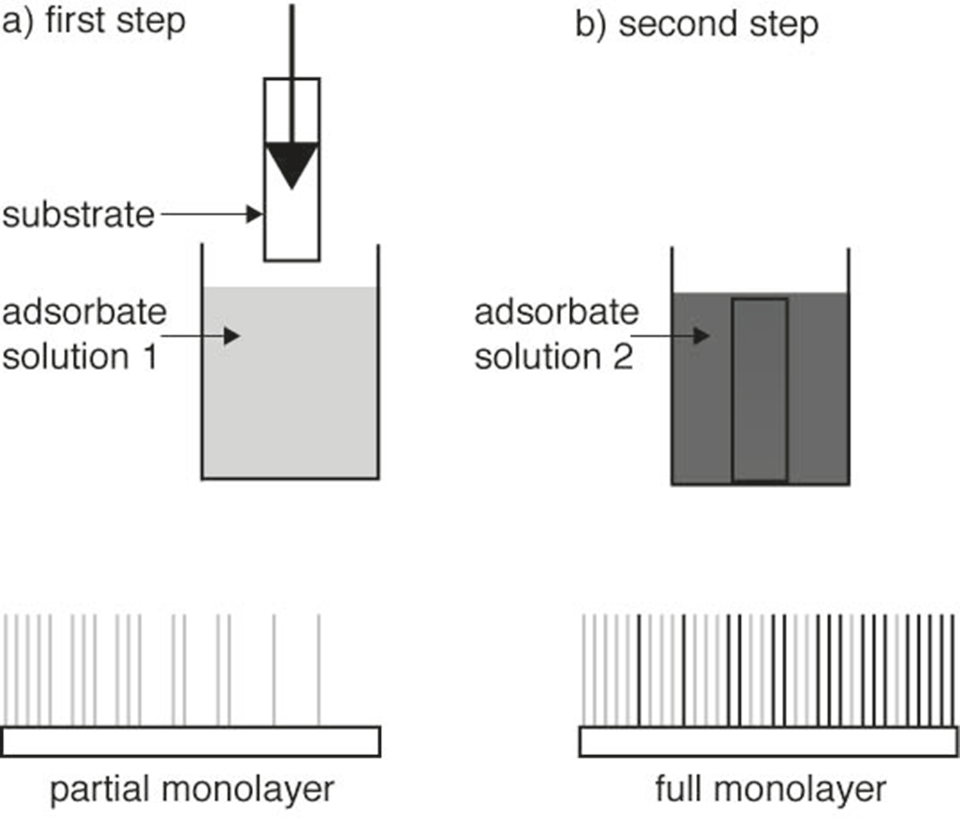Surface-Chemical Gradients
We have developed a new method for the generation of surface-chemical gradients. This new method has the advantage to be technically simple, but very versatile in its chemistry. It can be applied to systems, such as self-assembled monolayers, brush copolymers or even nanoparticles. In comparison to other methods [external page1call_made] it also allows for the generation of larger-scale gradients (a few centimeters in length).
Method
Our method [external page2call_made] relies on the controlled adsorption of molecules from dilute solutions by means of a gradual immersion (see Fig. 1 for setup). Process parameters are thereby the choice of solvent, concentration of the solution, immersion time and temperature. By choosing appropriate parameter combinations, one can control the adsorption time such that a coverage gradient of one molecule (one species) forms. (see Fig. 2a) This single-component coverage gradients can be used as a chemical gradient as it is, or it can be saturated during a subsequent immersion with a second component, for example a molecule with a different functional end-group, as to generate a two-component chemical gradient (see Fig. 2b)

Gradients of a wide variety of (bio)chemical properties can be generated, for example wettability gradients prepared from a combination of OH- and CH3-terminated alkanethiols as shown in Fig. 3.
Such gradients can be used in a wide variety of possible applications in such diverse areas as cell-motility studies, nanotribology or high-throughput screening. Short (< 10 mm) wettability gradients, for example allow for the transport of small water over short distances droplets (see embedded movie below).

References
- Morgenthaler, S.; Zink, Ch.; Spencer, N. D., external pageSurface-Chemical and –Morphological Gradientscall_made. Soft Matter 2008, 4(3), 419-434.
- Morgenthaler, S.; Lee, S. W.; Zucher, S.; Spencer, N. D., external pageA simple, reproducible approach to the preparation of surface- chemical gradientscall_made. Langmuir 2003, 19(25), 10459-10462.


